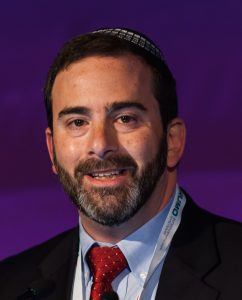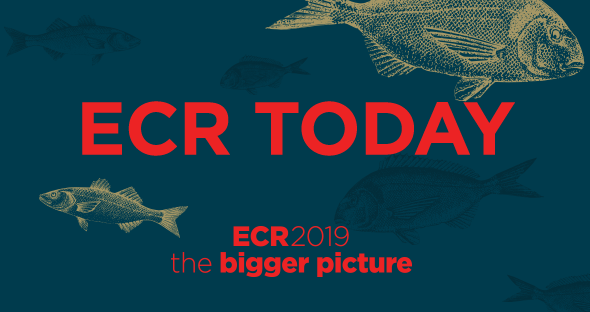Systemic effects in interventional oncology: Holy Grail or Pandora’s Box?
Nahum Goldberg is full professor of radiology at Hadassah Hebrew University, Jerusalem, Israel and visiting professor of radiology at Harvard Medical School, Boston, MA. He is a worldwide expert in image-guided tumour therapy, a field he has helped pioneer and continues to advance. He will share some of the latest results on the effects of these therapies, both positive and negative, today during the Josef Lissner Honorary Lecture.
Image-guided therapy and transcatheter intervention work best on small tumours in the liver, kidney and several other organs, evidence over the past two decades has showed. That was the birth of interventional oncology and it held exciting promise for the (radical) improvement of cancer treatment. Based on that knowledge and promise, many researchers have worked towards combining these procedures with more conventional cancer therapies like chemotherapy and radiation to increase the size and range of the population that can be treated.

Prof. S. Nahum Goldberg from Jerusalem will share some of the latest results on the effects of image-guided tumour therapy, during the Honorary Lecture today at 12:15.
One of the underlined premises of interventional therapies is that using imaging to guide a procedure is less invasive than using other methods like surgery. Despite this and other advantages that have led to ablation systems and techniques now being used clinically more than 100,000 times annually, things have not always gone as planned, according to Goldberg, who heads the interventional oncology unit at Hadassah Medical Centre.
“Specifically, for much of the last two decades, we have argued that other benefits of these interventional oncologic therapies, including percutaneous tumour ablation and chemoembolisation, were focal and local, based upon our conviction that we were only affecting the tumour we were treating and not the entire patient system. It turns out, based on early case reports and more solid evidence produced over the last five years or so, that this premise is not always true,” said Goldberg.
“Most of the damage occurs where intended, but all kinds of pathways in the system are also activated after an intervention. Just like a sunburn that affects a local piece of skin can be accompanied by a headache or fever, a systemic reaction can follow an interventional oncologic procedure in some patients and under certain circumstances. Depending on the type of tumour and its location, a series of both positive and negative systemic effects can be unleashed,” he added.
These effects are rather variable and are currently hard to predict, but one thing is certain: there is a good side and a bad side – the Holy Grail and Pandora’s Box, as Goldberg put it.
On the positive side, interventional procedures can incite an immune reaction in which the body will identify the cancer and form much larger responses that can help to treat other tumours besides the one that is being targeted. Such positive reactions, which can be of assistance in the treatment of metastatic cancer, occur under the so-called abscopal effect hypothesis, in which tumours shrink both inside and outside the scope of localised treatment.
On the negative side, interventional therapies can activate or free pathways that can have harmful effects, including tumour growth increase.
In his lecture today, Goldberg will provide some of the initial data regarding which molecular mechanisms can have potential effects on treatment, but above all, he wants to increase awareness of the issue among the audience.
“It becomes incumbent on us to better understand on a tumour-by-tumour, organ-by-organ, ablation-method-by-ablation-method, and patient-by-patient approach which pathways we’re activating and how to accentuate the positive and cause immune effect, and reduce or eliminate the negative that you see from tumorigenic effects,” he said.
The medical community must think of clever methodologies to figure out which interventional therapy is going to give the best results, and personalised medicine using biomarkers has a role to play. However, we are still at an early stage in terms of understanding which biomarkers will predict which patients are going to go along a given immune pathway or tumorigenic pathway. Much of this work remains to be done.
Large data bioinformatics and artificial intelligence search strategies will potentially serve that purpose, helping, for example, to collate and analyse data from biobanks. Goldberg and his colleagues are exploring how to develop rational methods of determining how much data are needed to develop sufficient clinical relevance.
“The million-dollar question will be how to elegantly extract relevant data, as opposed to the current investigation methods, which are usually driven by individual investigators and which, at some point, won’t be enough,” he concluded.
Goldberg has helped to develop the field of interventional oncology from scratch. Twenty years ago he was involved in a partnership with Prof. Luigi Solbiati from Milan and Dr. Tito Livraghi from Vimercate, Italy, two pioneering Italian radiologists in the field of image-guided tumour ablation. Around that time, he founded a minimally invasive tumour therapies laboratory at Beth Israel Deaconess Medical Center in Boston, and about 15 years ago, he established an independent applied radiology laboratory at Hadassah Medical Centre. In addition to helping to elucidate the mechanisms behind tumour ablation, ablation systems and techniques designed in these laboratories are now used clinically more than 100,000 times annually.
Josef Lissner Honorary Lecture
Friday, March 1, 12:15–12:45, Room A
Systemic effects of image guided tumour therapy: have we opened Pandora’s Box or found the Holy Grail
Nahum Goldberg; Jerusalem/IL
A dedicated interventional radiology (IR) programme will again be held at the ECR in the Cube, a new addition that attracted lots of delegates last year. Spread across 700m² of floor space in the Meliá Hotel Vienna, the Cube 2.0 will once more provide an engaging, hands-on introduction to the fascinating world of IR, with four main themes, one per congress day: peripheral IR, central IR, oncological IR and neurological IR. Friday, March 1 will feature five interactive sessions on oncological IR, with opportunities for participants to simulate oncological interventions.
The Cube is also cooperating with the European Federation of Radiographer Societies (EFRS) and radiographers are very welcome to take part. This ‘Silicon Valley’ of IR education is sure to make a big splash at ECR 2019!


